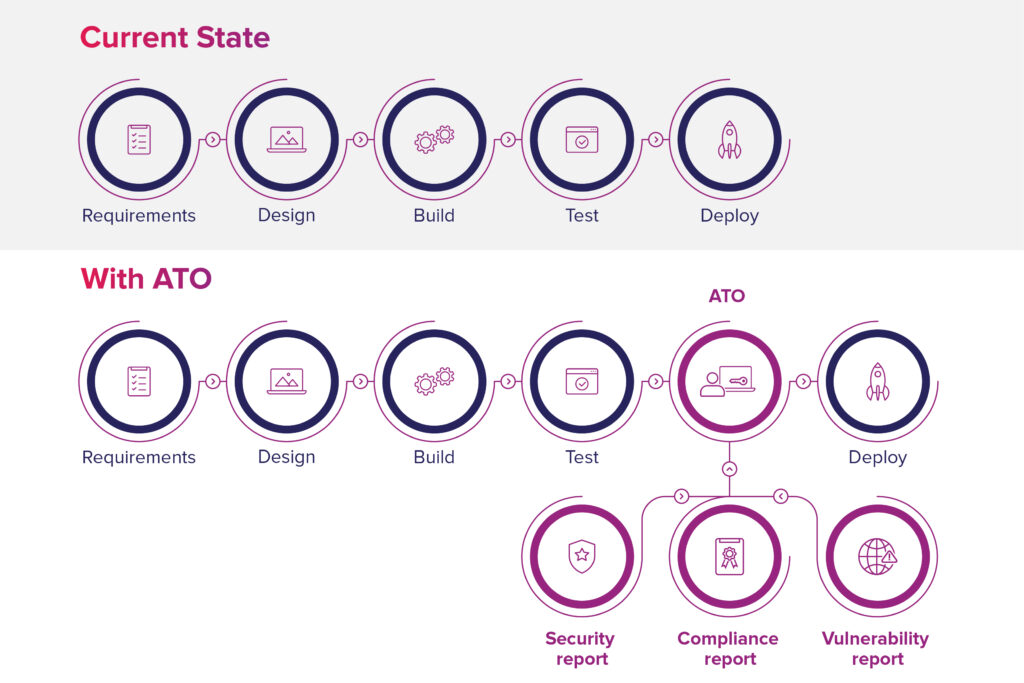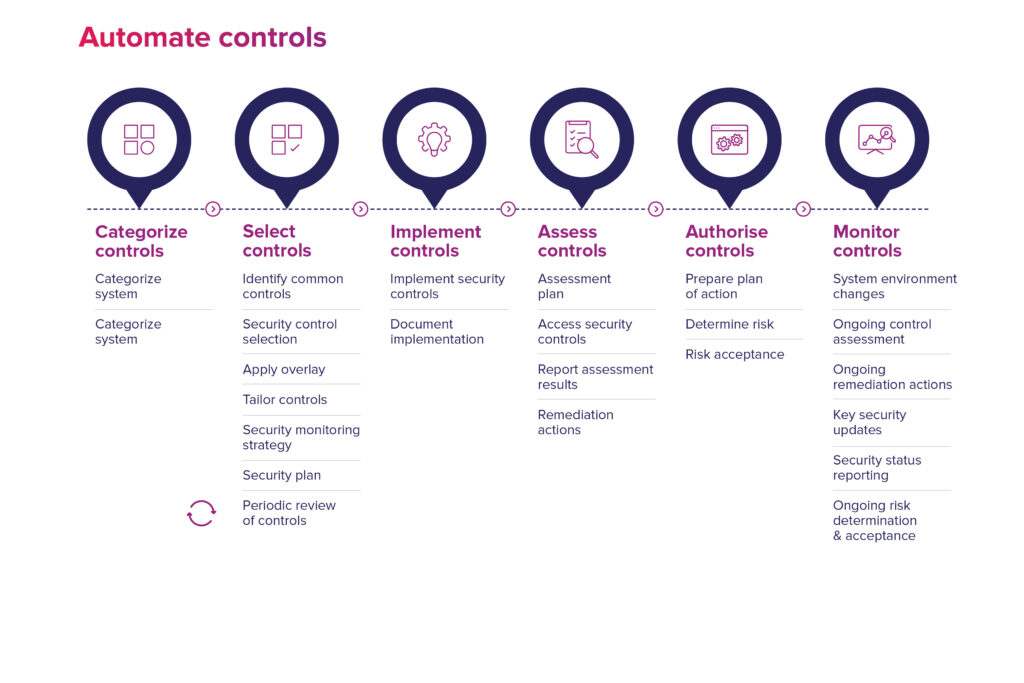Simplify security compliance and governance with Authority to Operate (ATO)
In this article, we’ve defined the process of ATO and the industries in which ATO can be applied. We have also discussed the roles and responsibilities to maintain ATO in an organization.
What is ATO?
Authority to Operate (ATO) is a term used to describe the approval or authorization granted to a system, network, or application to operate in a specific environment. In general, an ATO is granted when an organization’s information technology (IT) system or application has met the necessary security and risk management requirements, and is deemed safe to use. Often used in the federal government, ATO processes typically involve a thorough assessment of the system or application, including an evaluation of its security controls, to ensure that it meets the necessary security standards and can operate safely within the intended environment.

An ATO process may include an assessment of the system’s security controls, as well as other considerations such as its compliance with regulatory requirements, its impact on the organization’s operations, and its potential risks and vulnerabilities.
Can Authority to Operate be applied in other industries?
Yes, the concept of Authority to Operate (ATO) is not limited to the federal government or any specific industry and can be applied to a wide range of organizations and systems. An ATO process may be used in any industry where the security and integrity of an IT system or application is critical to the organization’s operations. This includes industries such as healthcare, financial services, and energy, among others.
The ATO process is often used as a means of ensuring that an organization’s IT systems and applications are secure and compliant with relevant regulations, and that they can be used with confidence by the organization and its stakeholders.
An ATO process is therefore relevant to just about any organization with these needs.
Although associated primarily with government and military organizations, ATO is now trending in the software product development industry as a tollgate between the Test and Deployment phase of the software development lifecycle to ensure the security and integrity of IT systems and applications.
The ATO process
The Authority to Operate (ATO) process typically involves several steps, which may vary depending on the specific organization and the system or application being evaluated.
Below is a general outline of the steps that may be involved in an ATO process:
Categorize system: The first step in the ATO process is to categorize the information system according to its impact level on the organization’s mission, assets, and individuals. This is important because the security controls required for a system depend on its impact level.
Select controls: Based on the system’s impact level, the organization must select the appropriate security controls to implement. The security controls are selected from a set of controls defined in the organization’s security policy or based on industry best practices.
Implement controls: After selecting the security controls, the organization must implement them in the information system. This involves configuring the system, installing software, and ensuring that the controls are properly functioning.
Assess controls: Once the controls are implemented, the organization must assess their effectiveness to ensure that they are meeting the security requirements. This includes conducting security testing and evaluation, risk assessments, and documentation.
Authorize controls: Once the controls are implemented, the organization must authorize them to ensure that they are operating effectively and meeting the security requirements. This involves conducting security testing and evaluation, risk assessments, and documentation.
Monitor controls: After the controls are authorized, the organization must continuously monitor their effectiveness and performance. This includes ongoing security testing and evaluation, incident response, and reporting.

Roles and responsibilities
The ATO process typically involves a number of different roles, including:
- Security Officer: Responsible for overseeing the organization’s security program and ensuring compliance with regulatory requirements.
- Risk Manager: Identifies and evaluates potential security risks and vulnerabilities and recommends appropriate countermeasures.
- System Owner: The person with the overall responsibility for the system, including its security and compliance.
- System Administrator: Responsible for the day-to-day management and operation of the system.
- Tester: Conducts testing and validation of the system to ensure it meets the required standards and specifications.
- Approving Official: The person with the authority to grant the ATO based on the results of the risk assessment and testing.
- Compliance Officer: Ensures that the system is in compliance with relevant regulations and standards.
- Incident Responder: Responds to security incidents and ensures that the incident is handled in accordance with the incident response plan.
- Auditor: Conducts regular audits of the system to ensure compliance with the ATO.
- Training Officer: Provides training to staff on how to maintain compliance with the ATO.
What Relevantz Can Do for You
We help customers manage skill complexity, delivery risk, the regulatory landscape, cost efficiency, automation, and innovation through outsourcing maintenance of existing infrastructure, infra support, cloud, and agile managed services.
With our managed ATO services, we can offer an ATO roadmap, from manual ATO to semi-automated and fully automated and continuous ATO.
And our hire and support model helps protect the domain knowledge of your existing workforce and helps to address the talent gap.
Want to introduce ATO as a managed service for your enterprise?
